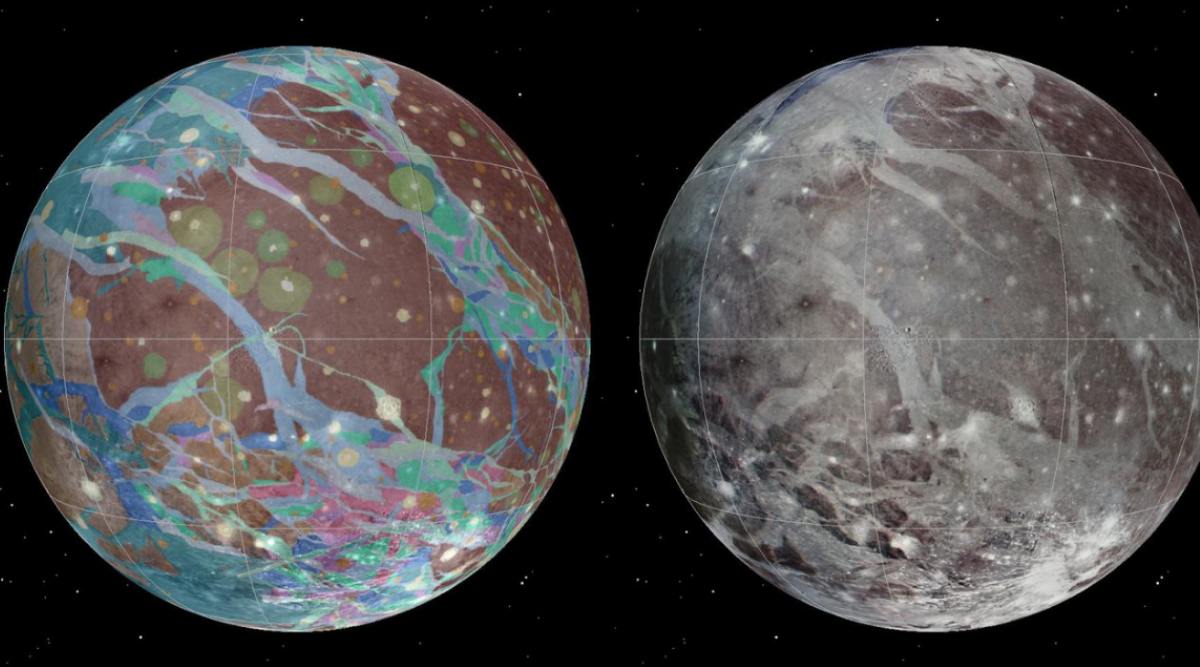 Left to right: The mosaic and geologic maps of Jupiter’s moon Ganymede were assembled incorporating the best available imagery from NASA’s Voyager 1 and 2 spacecraft and NASA’s Galileo spacecraft (Image source : USGS Astrogeology Science Center/Wheaton/NASA/JPL-Caltech)
Left to right: The mosaic and geologic maps of Jupiter’s moon Ganymede were assembled incorporating the best available imagery from NASA’s Voyager 1 and 2 spacecraft and NASA’s Galileo spacecraft (Image source : USGS Astrogeology Science Center/Wheaton/NASA/JPL-Caltech) NASA’s Juno spacecraft is set to get the closest look at Jupiter’s largest Moon in over 20 Years. The Juno spacecraft will come within 645 miles (1,038km) of Jupiter’s largest moon Ganymede and gather significant observations.
On June 7, at 1:35pm EDT (11:05pm IST), the flyby will be the closest a spacecraft has come to the solar system’s largest natural satellite since NASA’s Galileo in May 2000. The Galileo had come as low as 162 miles (261 km) over the surfaces of the Galilean moons, producing detailed images.
NASA has stated that besides the striking imagery, the spacecraft will also gather insights into Ganymede’s composition, ionosphere, magnetosphere, and ice shell. Juno’s measurements of the radiation environment near the moon are also said to benefit future missions to the Jovian system.
Jupiter’s largest moon Ganymede is said to be bigger than the planet Mercury. The heavenly body is also said to be the only moon in the solar system with its own magnetosphere – a bubble-shaped region of charged particles surrounding the celestial body.
“Juno carries a suite of sensitive instruments capable of seeing Ganymede in ways never before possible,” Juno Principal Investigator Scott Bolton of the Southwest Research Institute in San Antonio said, while commenting on the event.
The science instruments aboard Juno are expected to begin collecting data about three hours before the spacecraft’s closest approach. These include the Ultraviolet Spectrograph (UVS) and Jovian Infrared Auroral Mapper (JIRAM) instruments along with Juno’s Microwave Radiometer’s (MWR) which will peer into Ganymede’s water-ice crust, obtaining data on its composition and temperature.
Juno is part of NASA’s New Frontiers Program, which is managed at NASA’s Marshall Space Flight Center in Huntsville, Alabama, for the agency’s Science Mission Directorate in Washington
- The Indian Express website has been rated GREEN for its credibility and trustworthiness by Newsguard, a global service that rates news sources for their journalistic standards.

